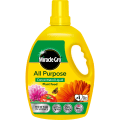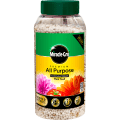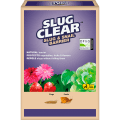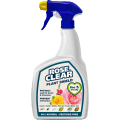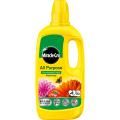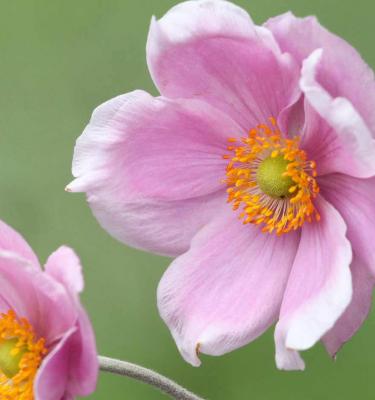

How to grow Anemone
Anemone are a cheerful and vibrant group of plants, providing interest from early spring onwards. There are lots of different colours of Anemone flowers and many different varieties of the plant, and in this article we will be exploring ones which grow especially well in British gardens. Anemone nemorosa, Anemone blanda, Anemone coronaria and Japanese Anemone are easy growers, spreading perfectly amongst other plants in a busy and colourful border.
Types of Anemone to grow
All Anemone are related to the buttercup, evident from the similar flowers, which are typically open and cup shaped. There are over 60 different species, and they are loosely grouped into one of three categories:
1. Spring flowering Anemone
Found in woodland and alpine areas, we recommend cultivars of:
- Anemone nemorosa. Widely known as the ‘Wood Anemone’, this variety loves shade, as it replicates their natural growing conditions, beneath a canopy of trees. This type of Anemone has delicate white flowers in March and April, although purple-blue and yellow flowering cultivars are also available.
- Anemone blanda. Also known as the ‘Windflower’ and ‘Balkan Anemone’, this popular variety of Anemone flower has blue, pink, or white flowers which appear from March through to April.
2. Spring and summer flowering Anemone
These Anemone thrive in hot and dry conditions. Varieties to consider include:
- Anemone coronaria. Commonly called the poppy Anemone, or Spanish marigold. Loved by florists as the flowers are perfect for adding to an early summer bouquet. This type of Anemone has pink, purple, red or white flowers which often have a contrasting centre colour. This variety is not hardy, and should be protected from frosts.
3. Summer and autumn flowering Anemone
The Japanese Anemone falls into this category, flowering in September and October, and preferring moist conditions and partial shade. A particularly spectacular variety is:
- Anemone hupehensis ‘Hadspen Abundance’. Deep purple-pink flowers, reaching up to 1m (3') in height.
- Anenome blanda, Anemone nemerosa and Japanese Anemone grow really well in the UK. They are suited to the UK climate and all are easy to look after.

What you’ll need to grow Anemone
To grow Anemone in your garden at home you’ll need:
- Gloves.
- Anemone bulbs/corms or Japanese Anemone plants.
- Container without holes (for bulbs only; not needed for Japanese Anemone plants).
- Container with holes (for bulbs/corms only; not needed for Japanese Anemone plants).
- Watering can.
- Sharp trowel.
- Miracle-Gro® Peat Free Premium Moisture Control Compost for Pots & Baskets.
- Miracle-Gro® Performance Organics Peat Free All Purpose Compost.
- Miracle-Gro® Peat Free Premium Fibre Smart™ Mulch (for Japanese Anemone plants only).
Where to plant and place your Anemone
Anemone are versatile bulbs and plants which can be planted in a variety of locations. Always wear gloves when handling plant material and compost.
Anemone coronaria needs a spot that receives full sun, Anemone blanda and Japanese Anemone will grow well in full sun or partial shade, and Anemone nemorosa prefers partial shade and consistently moist soil.
Allow Anemone to colonise part of a border if room allows, letting them spread beneath larger perennials. They also look great drifting amongst other spring-flowering plants in a grassy woodland area. Most can be grown in pots, with the exception of Japanese Anemone, which are more suited to growing in the ground.
When to plant Anemone
Anemone nemorosa, Anemone blanda and Anemone coronaria can be planted from September through to October. Anemone coronaria can also be planted in the spring and summer, and you can expect them to come into flower 3-4 months afterwards. Japanese Anemone are perennial plants, rather than bulbs, usually purchased as young container plants and are available all year round.
How to sow Anemone
Anemone bulbs (which are actually tubers, or rhizomes) and Japanse Anemone plants should be planted as soon as possible after purchasing them. The bulbs in particular are very sensitive to dry conditions, so do not allow them to dry out. Bulbs should be placed in a container of water the evening before planting them.
For container-grown Anemone bulbs, fill the pot with Miracle-Gro® Peat Free Premium Moisture Control Compost for Pots & Baskets. Aim to bury them at a depth of 5-8cm (2-3"). Plant them close together for a strong look when they come into flower, although do not allow the bulbs to touch each other.
For Anemone bulbs growing in the ground, use the trowel to make a gap in the soil, and then drop the bulb into the bottom of the gap. The bulb should be 5-8cm (2-3”) deep. Sprinkle a handful of Miracle-Gro® Performance Organics Peat Free All Purpose Compost in the gap, then gently firm the soil around the bulb. Plant further Anemone bulbs 10-15cm (4-6") apart.
Use the watering can to provide newly planted bulbs with a frequent source of water to maintain good levels of moisture.
For Japanese Anemone plants, prepare the ground by using the trowel to dig a hole to the same depth as the plant. The hole should be twice the width of the rootball. Japanese Anemone like rich and fertile soil, so spread a trowel full of Miracle-Gro® Performance Organics Peat Free All Purpose Compost around the bottom of the hole. Remove the plant from the pot, and place in the centre of the hole. Backfill with soil and gently firm in. Water well and apply a thick layer of Miracle-Gro® Peat Free Premium Fibre Smart™ Mulch around the plant.
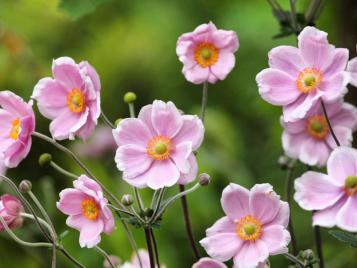
Caring and nurturing your Anemone
Watering
Water container-grown Anemone frequently and ensure that Anemone nemorosa has consistently moist conditions. Use Miracle-Gro® Peat Free Premium Moisture Control Compost for Pots & Baskets for container grown plants to maintain adequate moisture.
Fertilising
Feed with Miracle-Gro® All Purpose Liquid Concentrated Plant Food during the growing season. Mulch annually with Miracle-Gro® Peat Free Premium Fibre Smart™ Mulch.
Propagating
Divide spring- and summer-flowering Anemone tubers in the summer, once they have finished flowering. Move them immediately to their new location or temporarily place in a container until you are ready to plant them out in the autumn or spring. They can be allowed to self-seed too, which is an easy way to propagate more plants.
Lifting and transplanting
Portions of Japanese Anemone should be lifted from time to time to ensure other plants do not get swamped. Anemone coronaria should be protected from frosts by lifting the tubers from the ground and replanting outside in the spring.
Common pests and diseases with Anemone
Anemone are largely trouble-free. They are poisonous to many animals, meaning that squirrels and rabbits are unlikely to be a problem.
What are the slimy trails on my Anemone?
Slugs and snails can attack Anemone, although do not usually cause serious problems. Use SlugClear™ Slug & Snail Barrier if necessary.
What is the chalky white coating on my Anemone?
Powdery mildew can appear in very dry conditions, affecting the upper-most side of leaves. Prevent by watering frequently and not allowing pots to dry out. Destroy affected foliage.
Why are there blisters on the leaves or stem of my Anemone?
Anemone smut is a fungal disease which appears on the plant as a black sooty substance. Destroy affected plant material, and if possible change the soil (in pots) or grow the Anemone in a different location in the garden.
Frequently asked questions about Anemone
What does ‘Anemone’ mean?
The word ‘Anemone’ is derived from Greek, meaning ‘daughter of the wind’. All types of Anemone are often called ‘Windflower’.
How is ‘Anemone’ pronounced?
Emphasise the second syllable to make it easier to say correctly, so ‘Ah-NEM-oh-ne’.
Are Anemone poisonous?
Yes, Anemone are poisonous to many pets, including cats and dogs. They can cause problems for humans too, especially if ingested. Always wear gloves when handling any part of the plant, and wash hands thoroughly once you have finished working with them.
Can Anemone be used as cut flowers?
Yes, they are perfect for including in cut flower arrangements, especially cultivars of the Anemone coronaria variety. Keep them out of reach of children and pets.
Are Anemone easy to grow?
Yes, they do not need much attention after they have been planted. Anemone coronaria are frost tender so need protection during colder months.
Key features of Anemone
| Botanical Name | Anemone spp. |
|---|---|
| Plant Type | Herbaceous perennial |
| Family | Ranunculaceae |
| Light Exposure | Shade, partial shade, or full sun |
| Soil pH | Neutral |
| Flowering Time | March - June and September - October |
| Flower Colour | Pink, purple, red, white or yellow |
